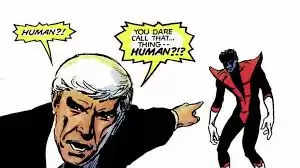UT Insight - Relating Indian Television Shows to Postmodernism theory
Everything is duplicate and reality is an illusion; modern Indian television reality and daily soaps are excellent instances of rotten material, fake reality, and overly dramatic screenplay.
By using 'hyperreality' element of Postmodernism theory, this study highlights the downside of Indian television daily soap and reality shows...
India is a multilingual country, and the various cultures here are in-turn linked to various religions. The amazing fact about this country is that people in this country are connected to each other through the belief they share. Speaking of how wealthy the country is in terms of television, TV reality shows and daily soap operas have long been a part of Indian culture. The subject of reality shows and daily soap shows has been enjoyed by the people of India because the characters sometimes connect a common man with his daily life. Since the introduction of television in 1984-85, various genres of television shows have emerged.
I conducted a survey on readers of UdaipurTimes on postmodernism and television behavior, and the results were very intriguing. 65% of our respondents were in the above 30 age bracket, while 9% were in the under 20 age bracket. The remaining were in the 21-30 years age bracket. This means that 65% of the respondents have viewed TV shows across the the last 4 decades.
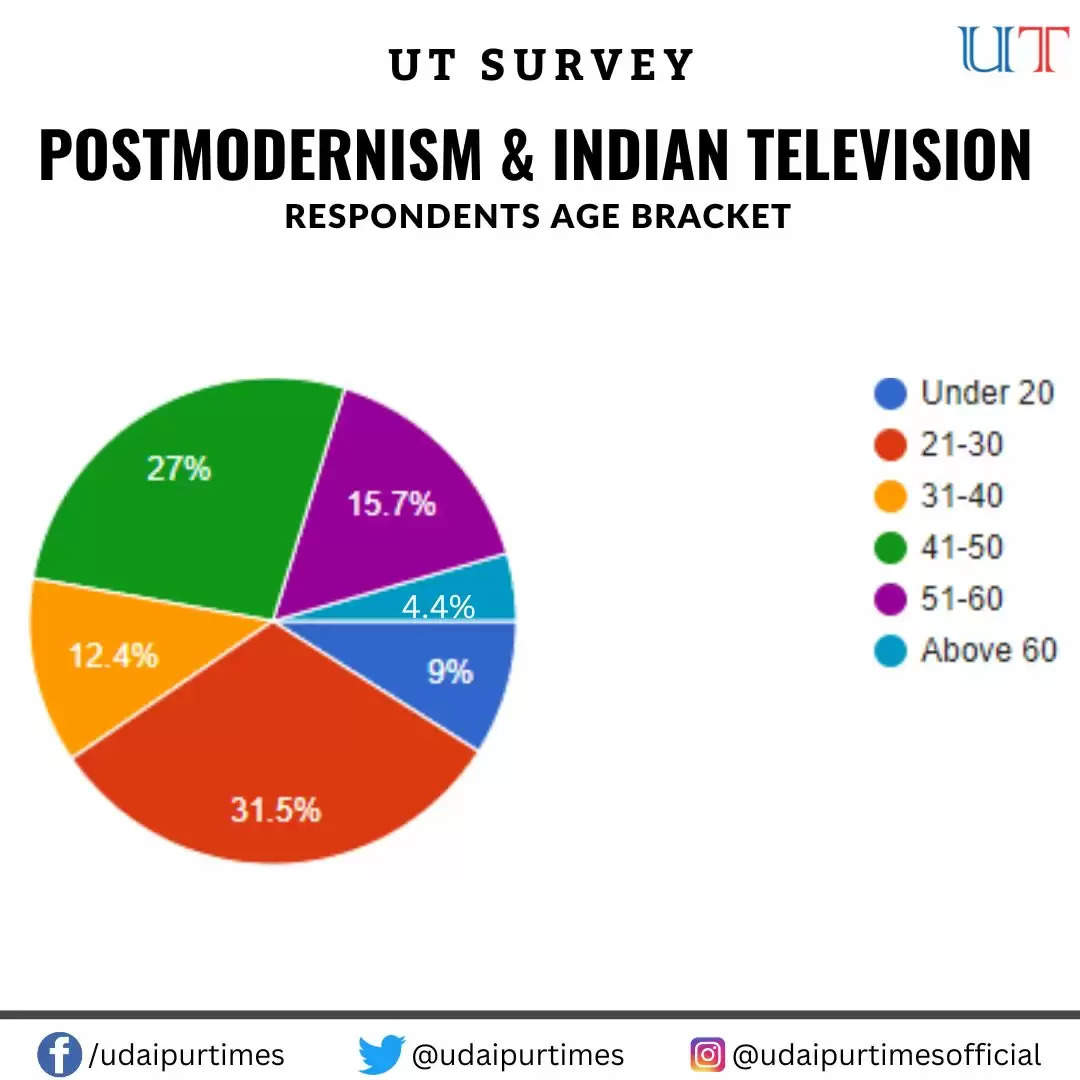
This article discusses how Postmodernism is present in current Indian TV shows and reality shows. There used to be a rich script in the Indian TV shows, but now there is a lack of genre and subject matter. Indian TV shows have been a significant part of Indian lives since early times. 42% of our respondents found the TV shows of the 80s and 90s to be more appealing, while 40% say that the TV shows between 2000-2010 were more appealing, which can be attributed to the age bracket breakup.
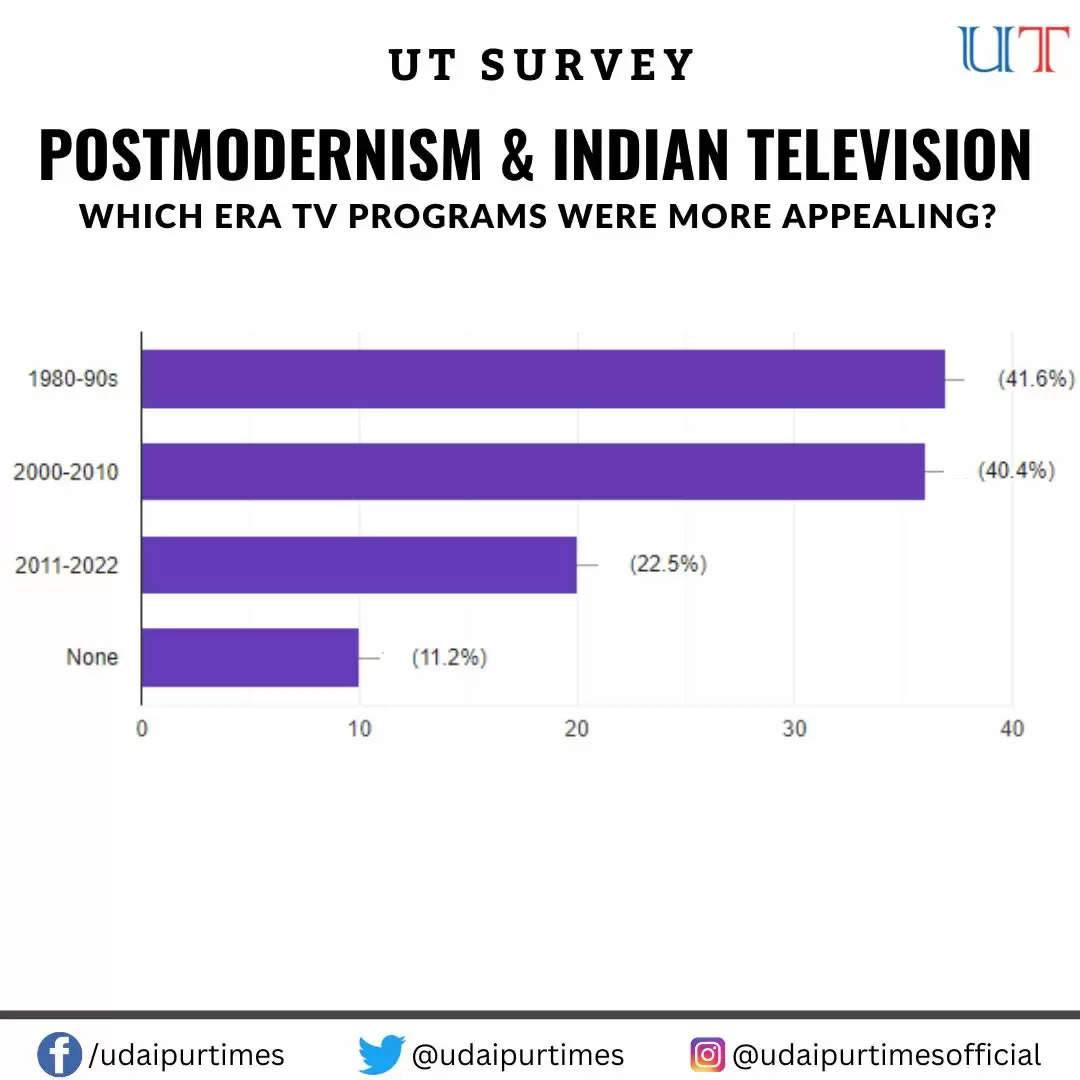
Lets highlight the salient points in the theory before we delve into my research and the outcomes.
Postmodernism Explained
Postmodernism is a theory that grew out of Modernism. Modernism was a movement that began in the late nineteenth and early twentieth centuries and evolved into Postmodernism, with the passage of time. Postmodernism is a philosophy, which states that the world is fragmented and that people identify with a false perception of reality. Everything in our world is a reproduction (Simulation). According to the famed Postmodernism thinker Jean Baudrillard, the world creates copies, and there is a lack of reality in this fragmented world. People create more duplicates than reality. Taking this point from Structuralism theory, which claims that Signifiers are far more powerful than the Sign itself, and that the thing with meaning that is termed Signified is a forgery. Indian television shows and reality shows depict characteristics of the Postmodern world in which reality does not exist and only hyperreality exists. 'Hyperreality' is one of the elements of Postmodernism, which has been explained by Jean Baudrillard.
As mentioned in Beginning Theory by Peter Berry (pg 65), in Postmodernism the distinction between what is real and what is simulated collapses. Everything is a model or an image, all is surface without any depth, this is what is called as hyperreal, as Baudrillard mentions.
One might see it as Platonism, in which people enjoy the mystical insight, that what is normally solid and real world is actually just a tissue made up of dreamlike images.
As stated above, everything is a duplicate of what we see and reality is an illusion; modern Indian television reality and daily soaps are excellent instances of rotten material, fake reality, and overly dramatic screenplay.
Some examples are necessary here. At times, the characters in Indian television shows are quite irritating. The character is depicted as a dead body, and then the character wakes up and acts as if nothing happened. Everything takes so long, scenes ranging from slipping down the stairs to background music; half of the drama is over in that sequence.
Survey and Responses
The survey of readers of UdaipurTimes, questioned what people find most appealing in reality shows, daily soaps, and serials. They responded with "good content and the sort of message that television shows provide", rather than just watching it for the celebrity/star quotient. 67% of our respondents agreed that they watch TV shows the quality of content and the message that they deliver.
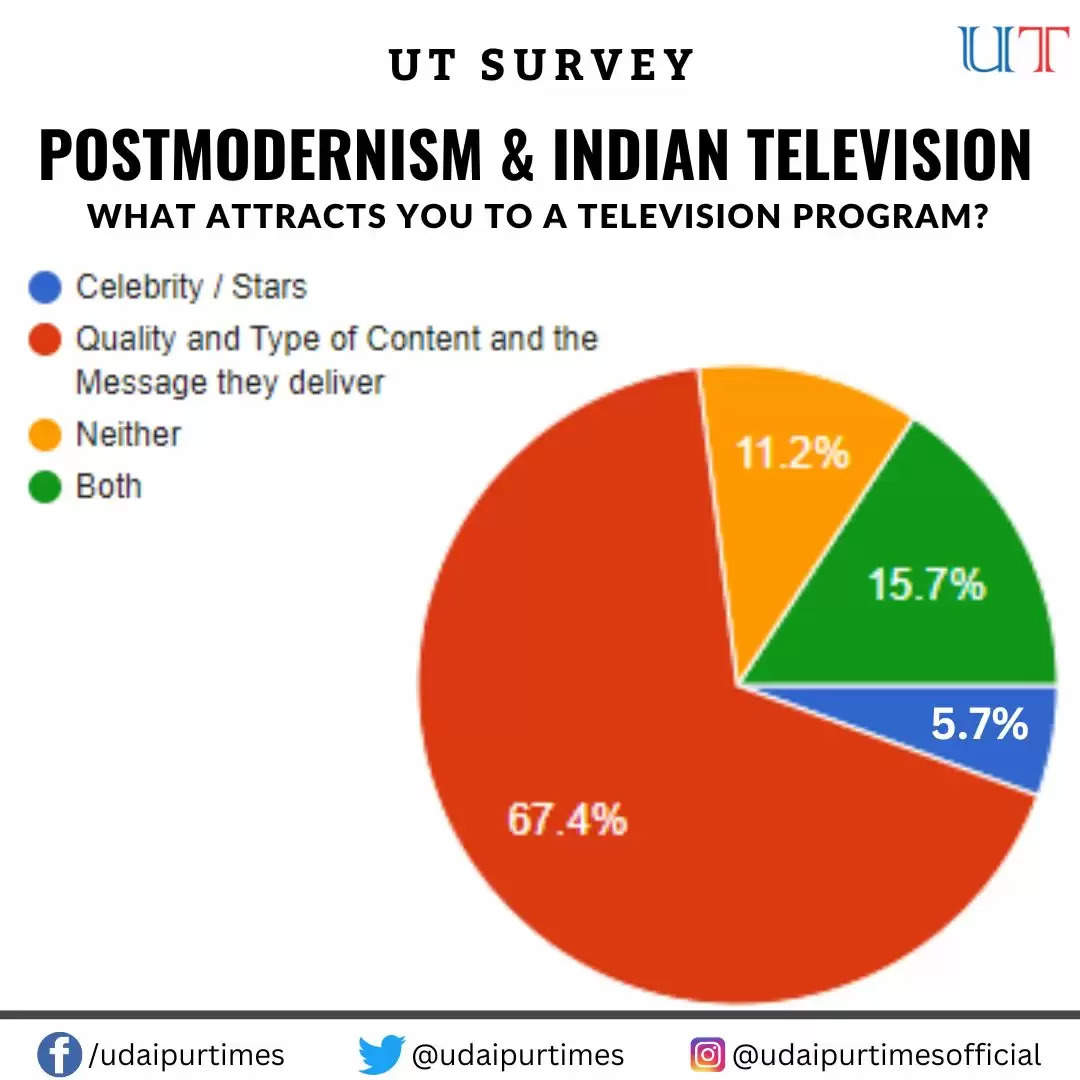
According to the survey, 78% of the respondents (rathers consumers of television shows) believe that television shows of today lack high-quality content. Indian television programmes, which have an influence on so many people across the country, are not just backward vis-a-vis their global peers (72% of respondents), but also dumb at times.
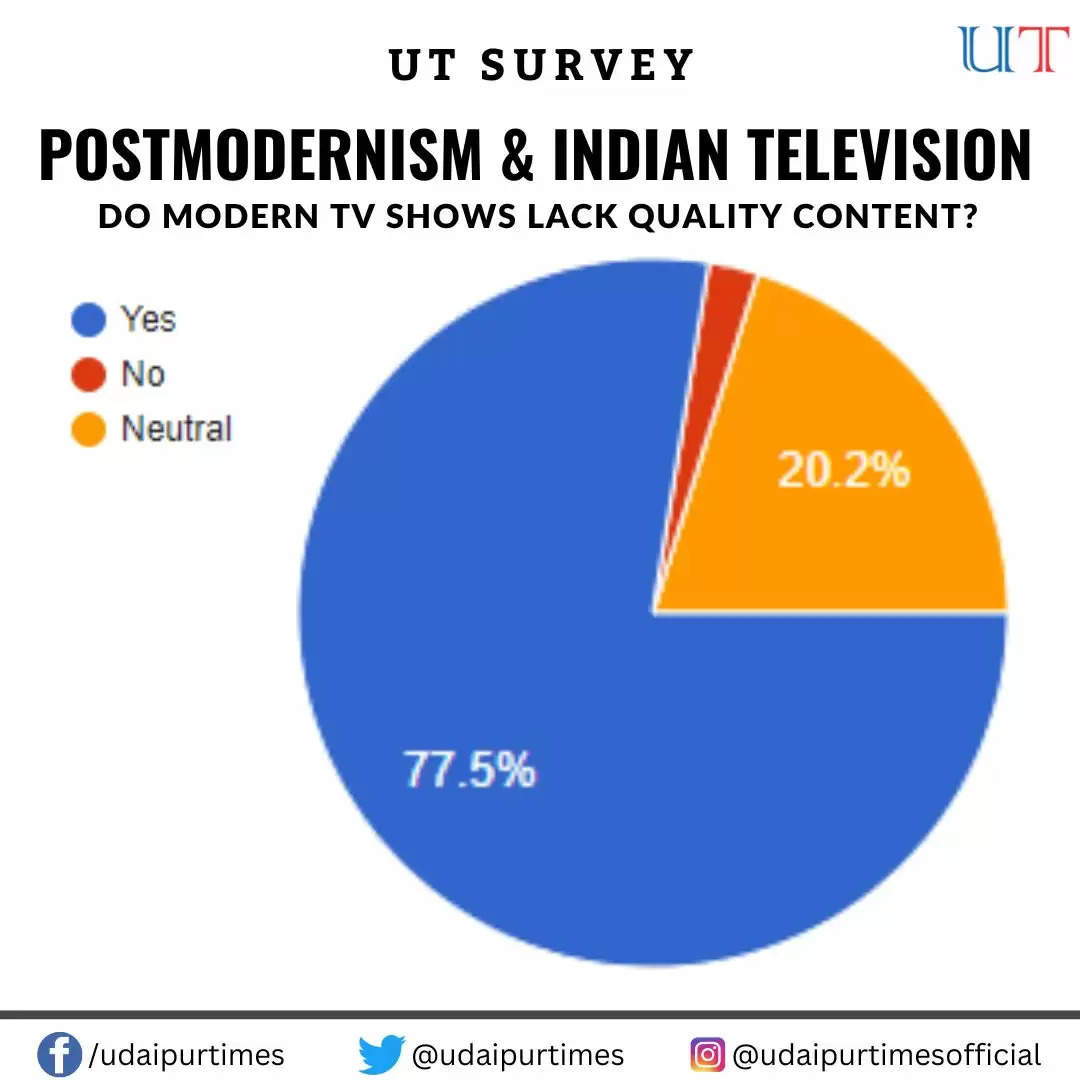
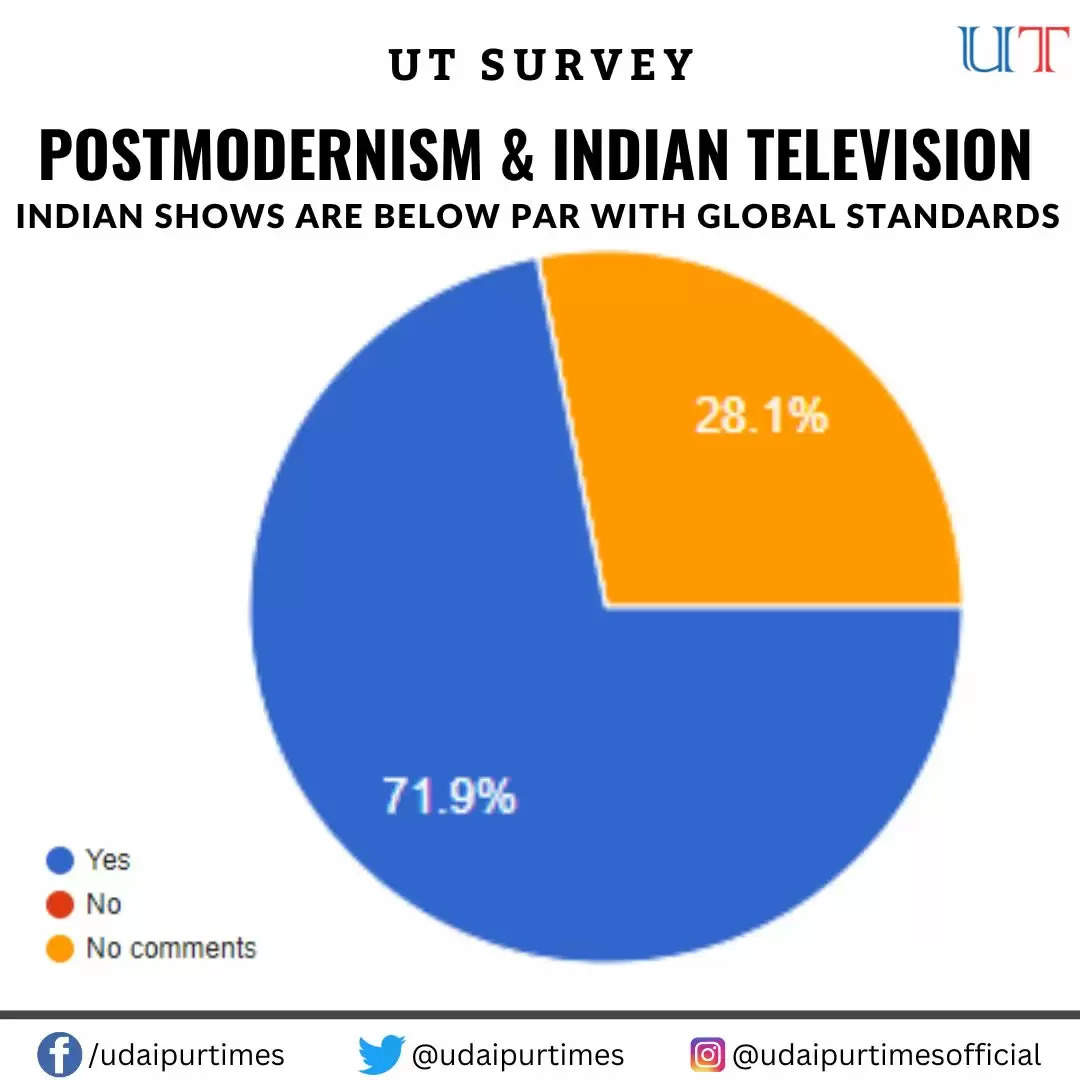
For quite some time, there has been discussion about the diminishing quality of Indian serials. Some aspects of Indian television that we all disagree on are the themes depicted in them. Nearly 50% of our respondents have said that these shows lack quality content, 60% say that the shows lack reality, 33% say that the shows are devoid of interesting dialogues and 40% are concerned about the messages delivered by TV shows today.
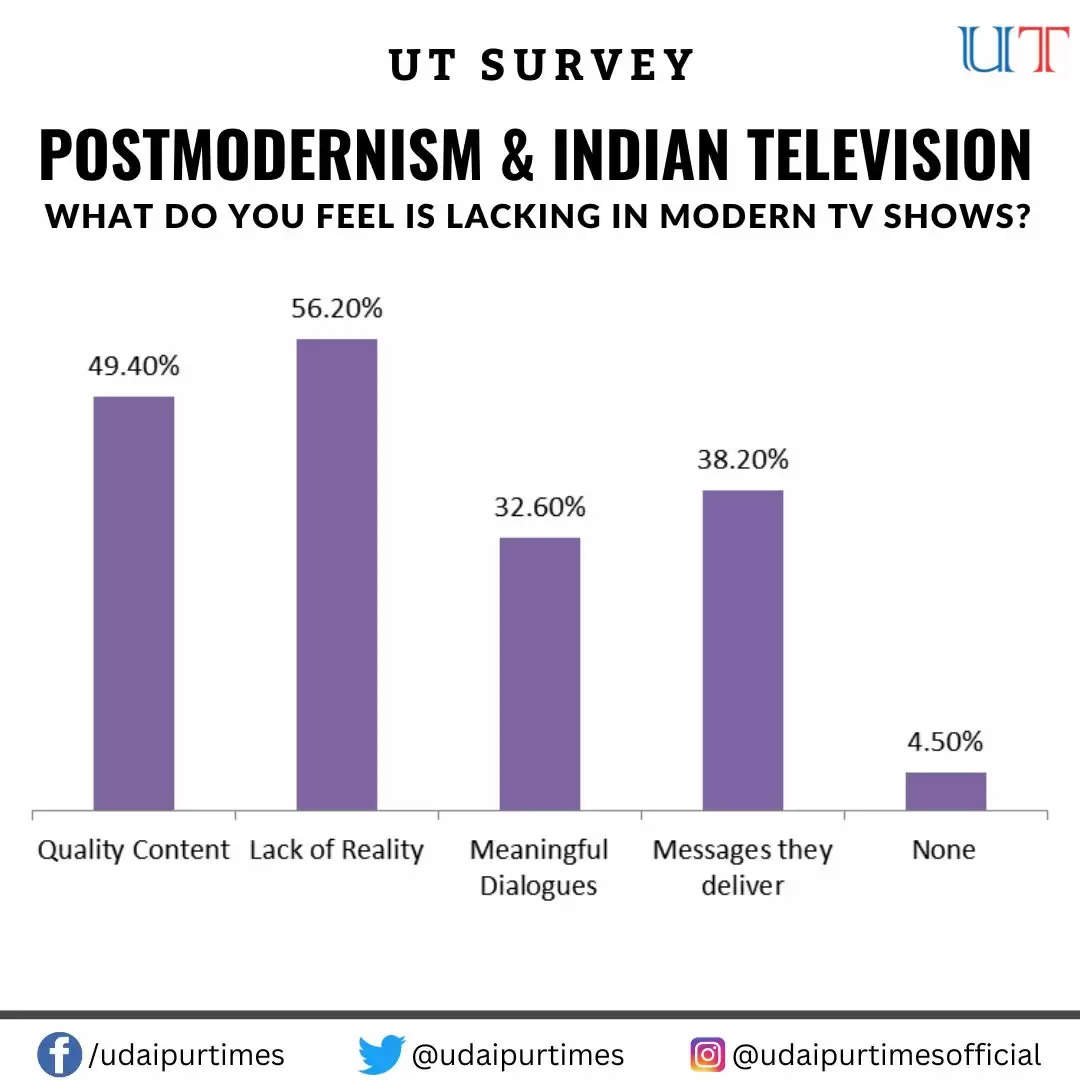
Taking an example out of the majority of TV shows, be it serials or reality shows, is the concept of patriarchy, which is frequently depicted in the shows. This, on one end is appreciated in these shows, but in reality, is frowned upon. We can clearly tie some of these weird scenarios from Indian daily soap operas to Postmodernism philosophy. From displaying unplanned weddings to characters washing devices (Gopi Bahu in 'Saath Nibhana Sathiya' on Star Plus); a dupatta getting entangled in a fan; a woman falling into a bag and traveling around the world since no machines could figure out there was a person inside; two men breaking a portion of the moon as lady love demanded. According to Jean Baudrillard's Postmodernism theory, everything is a model and image; here, the character is an image, and the message they are presenting is a surface with no depth, which is referred to as hyperreal.
What Life Lessons do you learn from Indian serials OR Do You Live in a Dreamworld that does not exist?
Based on our survery results, only a few Indian dramas are worth viewing because of their themes, characters and message, but most Indian plays are pathetic and lack logic. 94% of our respondents have rated current TV shows to be average or below average in terms of good content, entertainment and the message they deliver.
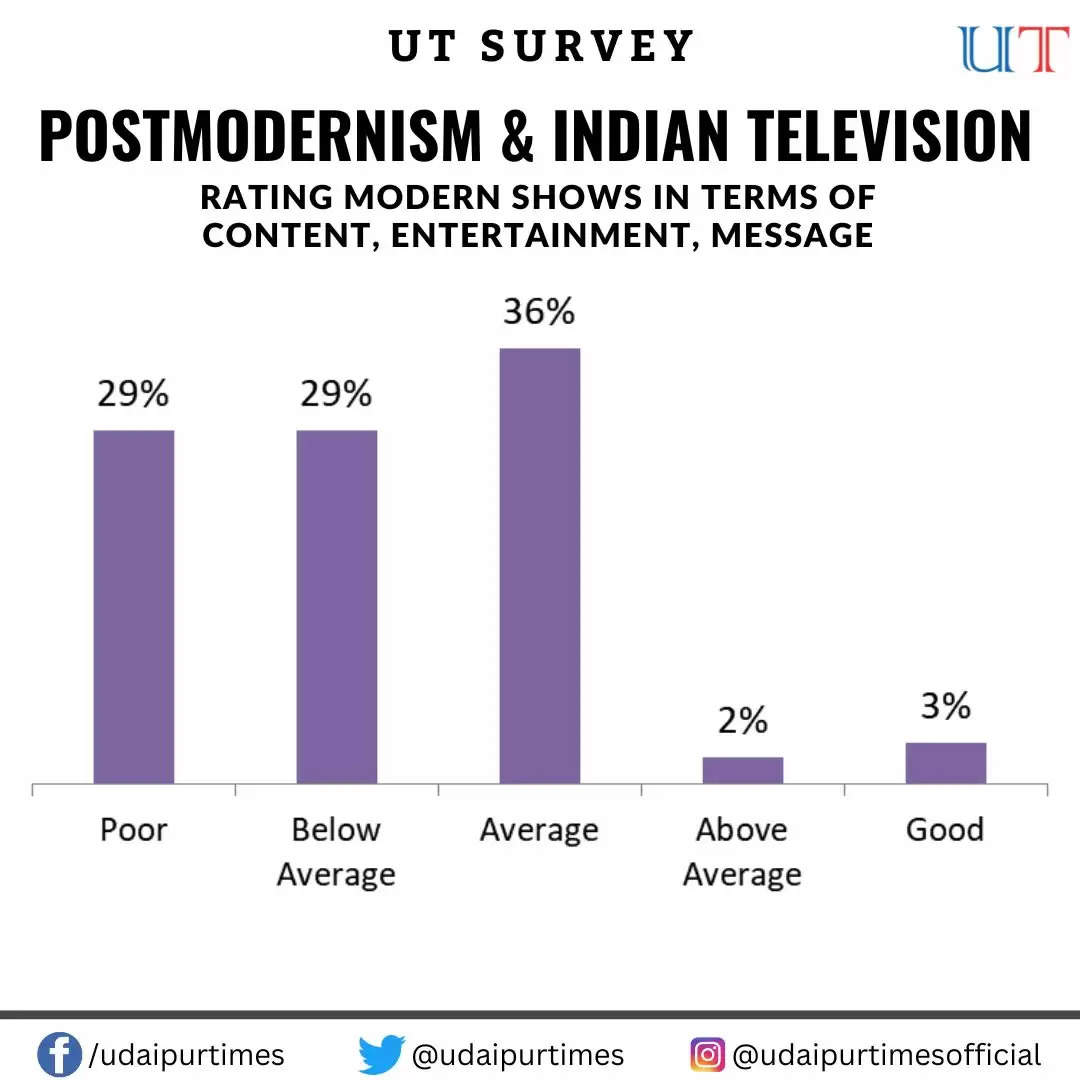
The reading from Peter’s Berry book made me think of the real world and the dream world. The Disneyland analogy illustrates that Disneyland exists to hide the reality that it is the 'real' country, all of 'real' America, which is Disneyland (just as prisons exist to hide the fact that it is the social in its whole, in its banal omnipresence, which is carceral). Disneyland is presented as fictitious in order to persuade us that the rest of the world is real. But Disneyland is actually a 'third-order simulation' (a sign which conceals an absence).
The first level of simulation highlighted by Postmodernism theorists is a faithful image/copy, in which we think, and may even be true, that sign is a "mirror of a fundamental reality," in what Baudrillard called "the sacramental order." The second step is distortion of reality, in which we start to believe that the sign is a forgery. Signs and pictures do not properly convey reality to us in this case, but they might hint to the existence of a hidden reality that the sign is incapable of capturing.The third step conceals the lack of a profound reality by posing as a faithful duplicate. The fourth stage is pure simulation, in which the simulacrum has no reference to any reality at all. Nearly 87% of the respondents have concurred that the Indian TV shows today are overly dramatic.
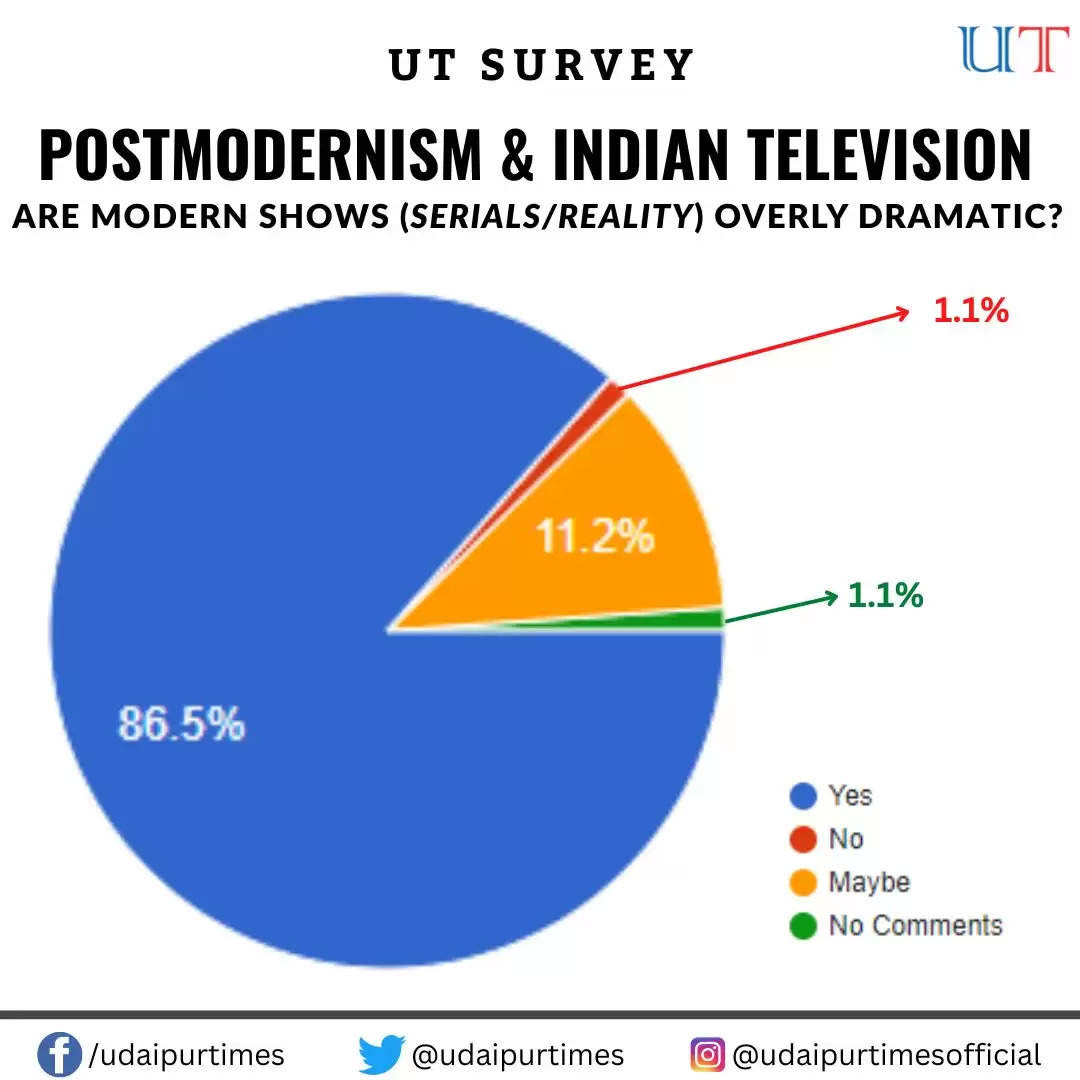
Today's popular Indian television reality programmes are simply a waste of time. The Postmodernism theory explains the following reasons: there is some theme that is present in every current Indian TV reality programme (which we might call the first stage: faithful image/copy, a symbol). The characters in Indian television reality programmes are depicted as real, and the viewer connects with them (which is the second stage: perversion of reality). The script they show us then pretends to be authentic yet is completely fabricated (which can be called as absence of profound reality). Finally, the character becomes a pure simulation (no reality).
The rhetorical question here arises: Will Indians survive without these shows?
Obviously not. The idea is to create more and more valuable scripts and material while portraying less false reality. Although postmodernism deconstructs reality, it is avoidable. 77% of our respondents agree that modern TV shows with good substance are underrated, while those with average or poor content rule the viewership charts.
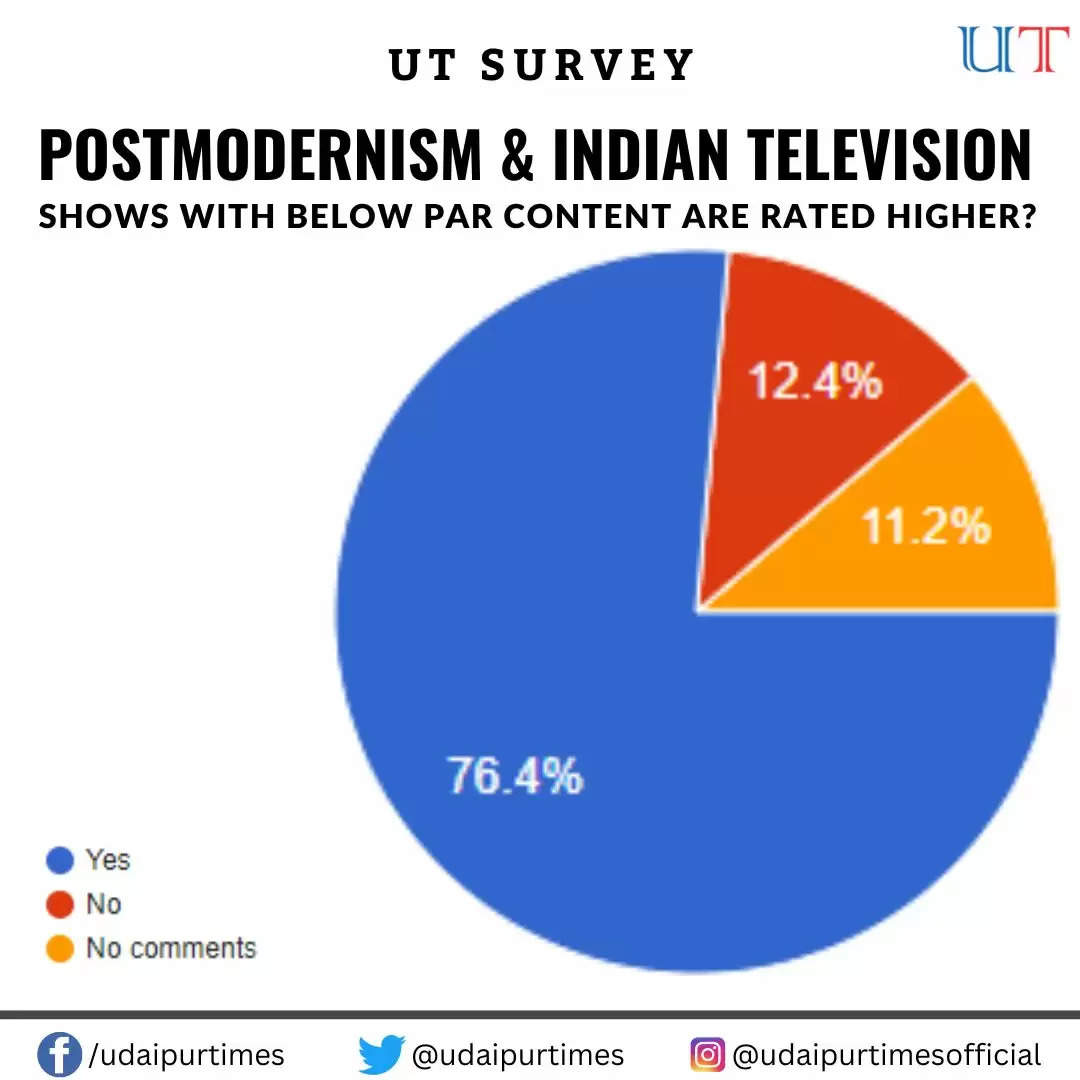
Absurdism and Indian TV Shows
The notion of Absurdism is referenced in Postmodernism, which states that the Post-World War II Absurdist movement was based on the premise that existence is irrational, illogical, discordant, and without reason. Similarly, there are few modern Indian television serials that make any logic. I would rather agree with the absurd world than with current TV shows because in the absurd world, humans found everything illogical and that life had no meaning because society after World War II lost hope in the world, but today's reality shows and daily soaps amaze me that the world needs that they show much of the fake realities and people believe it to be true. According to the study, reality television shows have a negative influence on society, with 61% agreeing. Another question identical to this was posed in the study, and the result was negative, as many respondents considered that these shows had a harmful influence on youngsters (88% agreeing).
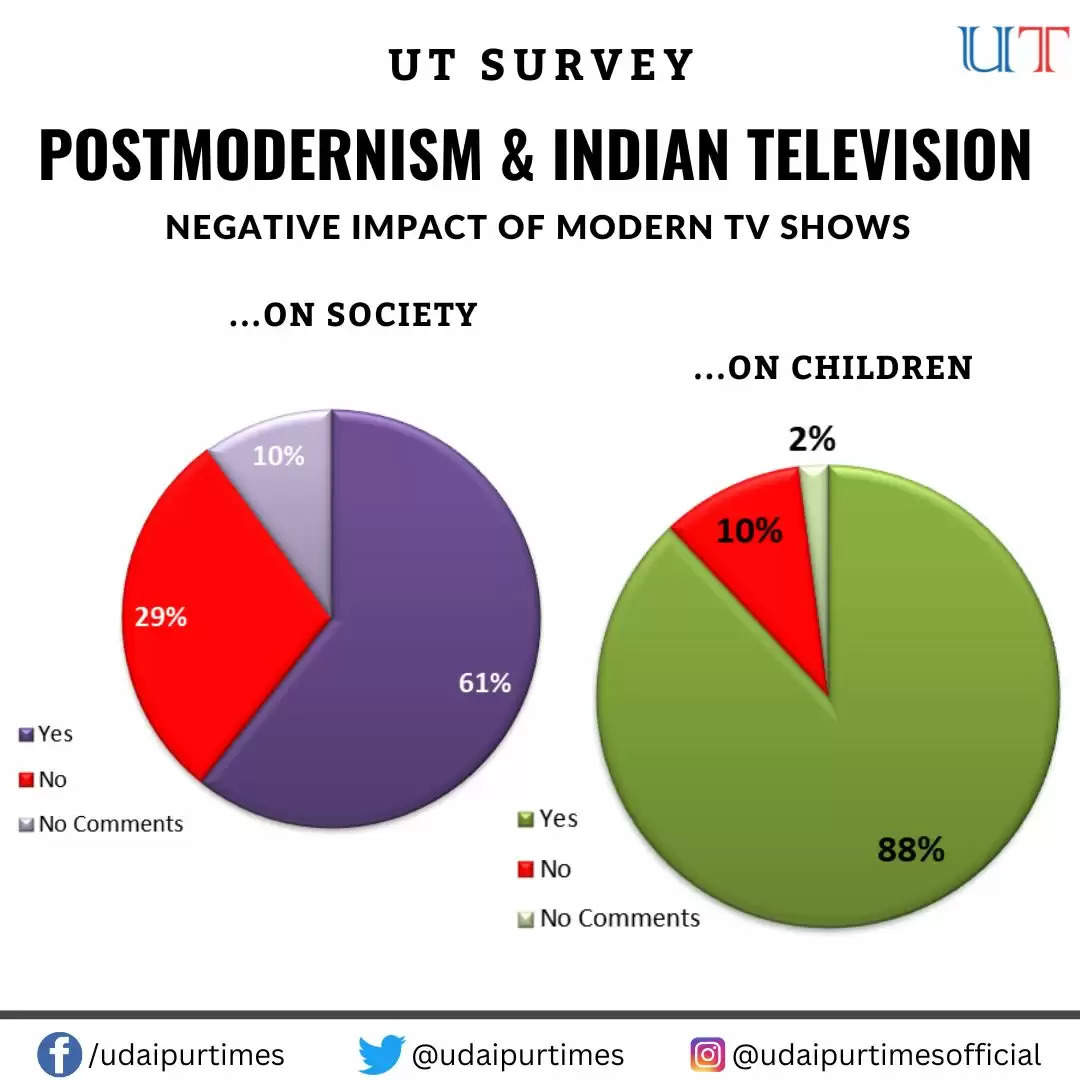
There was a time when Indian TV serials like Hum Log, Shanti, Buniyaad, Vikram aur Betaal, Yeh jo hai Zindagi, Nukkad and many such others were not only wonderfully written, but also inspired millions of people. And now we have Indian soap operas, which are a completely different breed. They produce 'absurd' illogical folly. According to the response to our reader survey, it is apparent that viewers have rated the pre circa 2000 TV shows very highly, in terms of content, entertainment and the messages they delivered (Pre 2000 TV Shows: 88% rated average to good; Post 2000 TV shows: 94% rated Poor to Average).
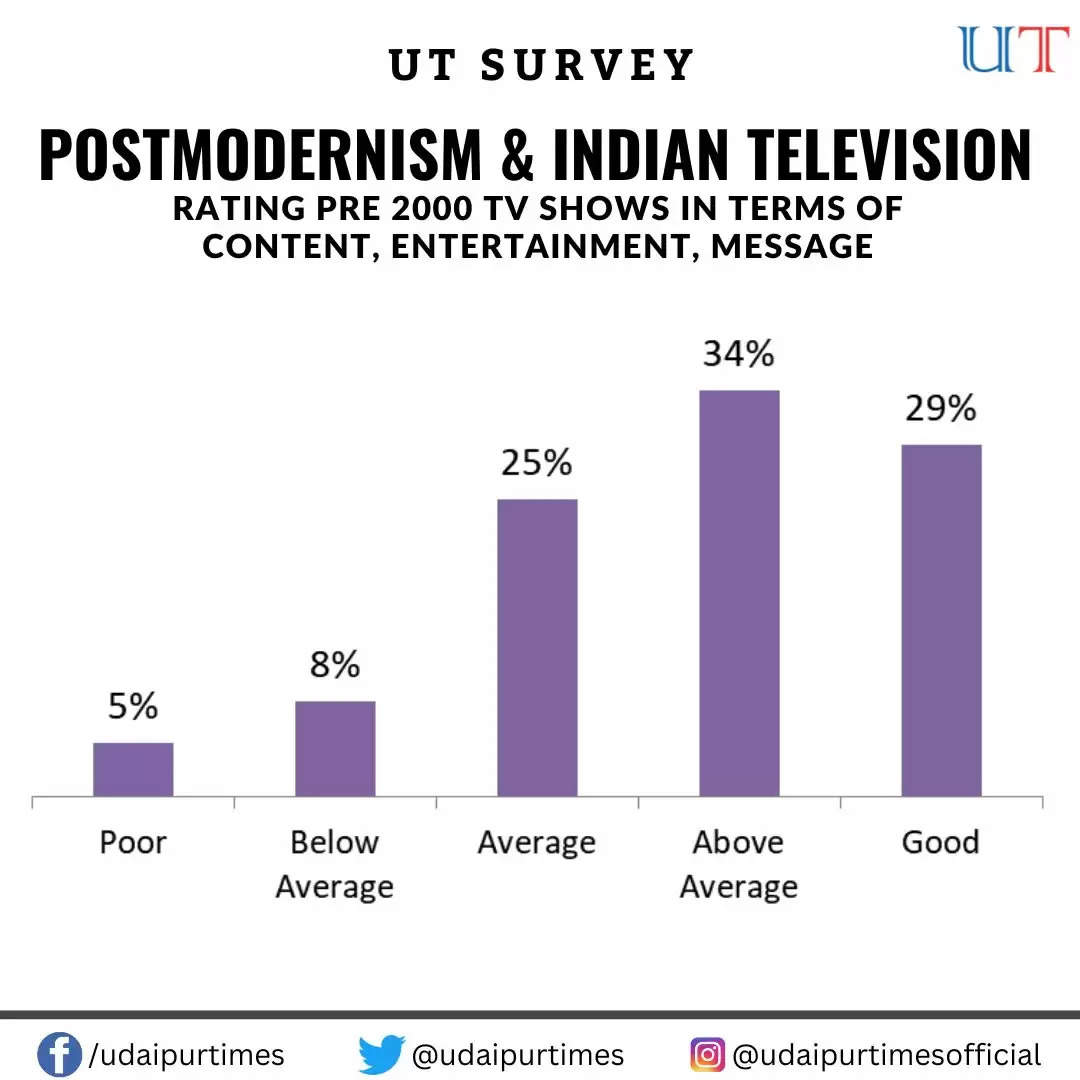
The surreal and dark sides of Indian reality television programmes are full of drama. It began in the early 2000s and felt quite real at the time, but as time passed, we all realized that it was all manufactured. The sob tales, love perspectives, and on-stage conflicts are all choreographed backstage in what Postmodernism refers to as "fake reality." Postmodernism deprives society of objective truth and rationality. According to postmodernism, truth is unreachable and everything is an interpretation. There is no such thing as ultimate truth. The 'hyperreal' is more than 'real,' and what we witness in these presentations is the Simulation (a duplicate of reality).
Platforms and Binge watching
Having explained the element of hyperreality in theory of Postmodernism under the practical example of Indian television shows, there is one other aspect that I feel i should cover and that is Binge watching. With the advent of OTT, TV has a more comfortable and quick alternative, that of smart phone and tablets where the OTT platofrms like Netflix, Amazon, Hotstar, Jio among a plethora of others are shelling out content in thousands. Even older television programs and movies are in their digital menu. As a part of our survey, we delved upon which platform viewers prefer to watch their entertainment shows... and nearly 55% of those watch TV shows prefer to do so on Mobile. Binge watching has escalated to exponential levels and cheap internet is one of the culprits of how time is spent in an unproductive manner, mostly by our younger generation.
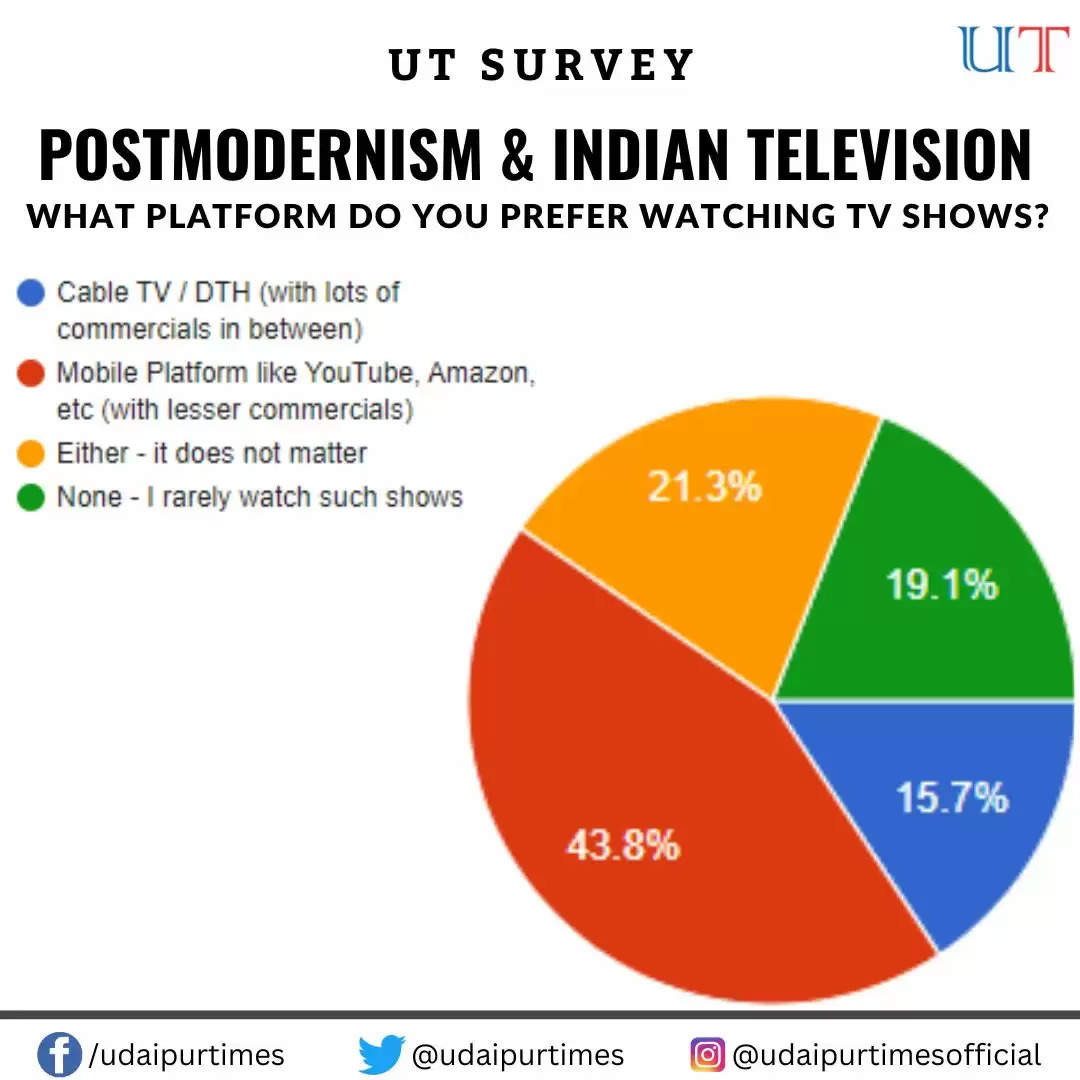
CONCLUSION
In the survey the question was asked about what kind of TV OTT programs people want to watch in future and the answers were shows like Anupama, Sarabhai v/s Sarabhai, Lucy's show, Office Office, Hum Panch, Surbhi, Bharat ek Khoj, Karamchand, Wagle Ki Duniya etc. People want to watch more quality content, Period dramas, Biopic dramas, Epic shows, Comedy shows, Global awarness, more of family values. People want content which is realated to current time and reality. They do not want to watch old school family dramas which does not make meaningful and mindful content. While some responded with great stories on Indian literarture, history and traditional folklore. programs which come to terms with current issues and move beyond "Saas Bahu" dynamic. Something with strong content,moral values and social topics.
To join us on Facebook Click Here and Subscribe to UdaipurTimes Broadcast channels on GoogleNews | Telegram | Signal



